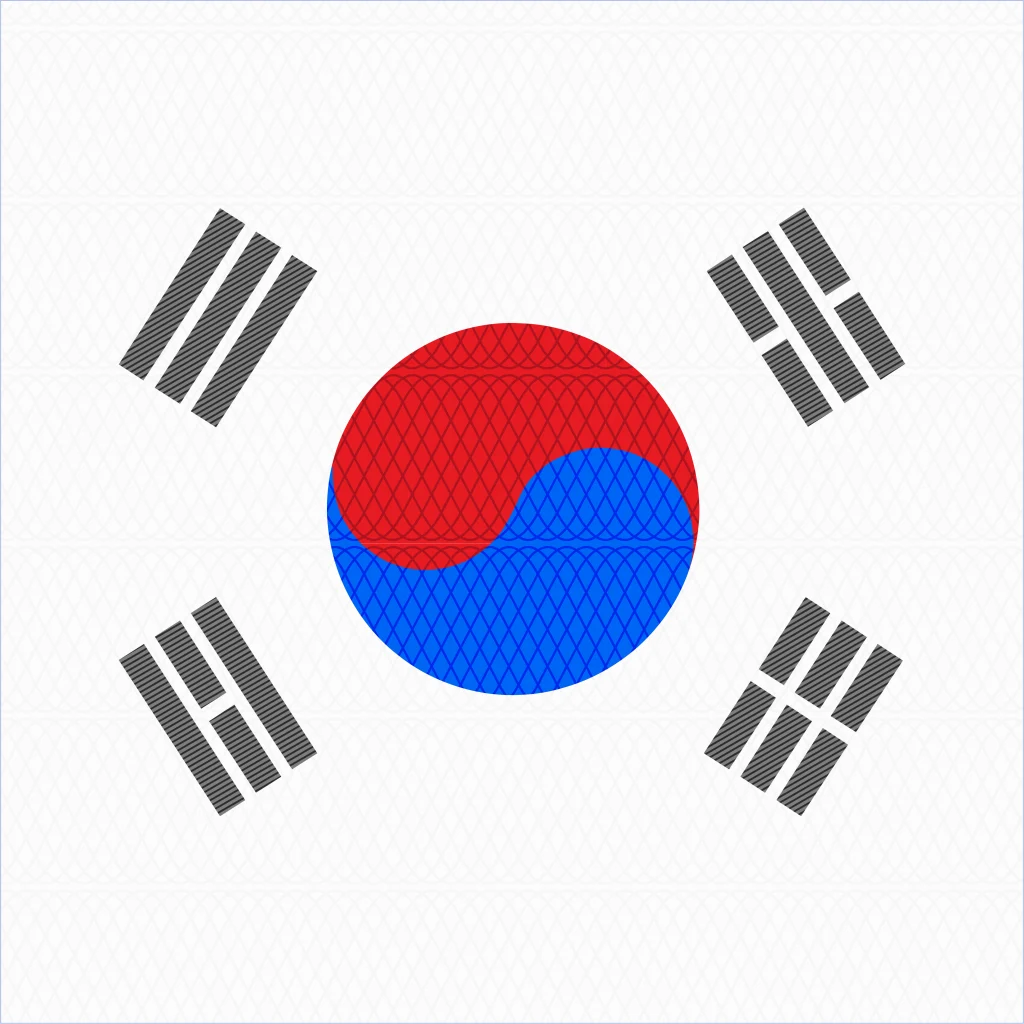
The term “Asian Tiger Economies” is used to describe a group of four rapidly developing economies in Asia: South Korea, Taiwan, Singapore, and Hong Kong.
These nations achieved remarkable economic growth and development from the 1960s to the 1990s, transforming themselves from impoverished, rural economies into high-income, technologically advanced societies. They are proof that it’s possible to grow as a country when the right strategies are in place.
In this article, we will explore some lessons that the Asian Tiger Economies can offer Nigeria that can help the Nigerian economy achieve sustained growth and development.
Understanding the Asian Tiger Economies

South Korea
South Korea‘s economy is a remarkable success story marked by rapid industrial growth. It transitioned from a war-torn, agricultural economy in the 1950s to a highly developed industrial powerhouse today. Some factors behind this transformation include education and human capital development, innovation and technology, export-oriented growth, robust infrastructure, and good governance. South Korea’s economy is home to global giants like Samsung and Hyundai and is known for its global leadership in industries like semiconductors and electronics. It serves as an example of how a nation can achieve rapid economic development by prioritizing education, innovation, and international trade.

Taiwan
Taiwan’s economy has evolved from a rural society to a global technology hub, boasting a robust electronics industry and a highly skilled workforce. Taiwan is home to major technology companies such as TSMC, ASUS, and Acer, which have played a significant role in its economic success. The government has supported research and development, fostering innovation and technological advancement. Additionally, its strategic location has made it a key player in the global supply chain, particularly in semiconductor manufacturing. Taiwan’s economy is marked by a strong emphasis on innovation, global trade, and a focus on high-tech industries.

Singapore
Singapore‘s economy is characterized by free-market principles and a strong focus on international trade and finance. It is a global financial centre and a hub for shipping and logistics. Singapore’s open economy encourages foreign investments, and it has nurtured a business-friendly environment with low taxes and minimal corruption. The country’s key economic pillars include finance, manufacturing, pharmaceuticals, and technology, with a commitment to innovation and education. Additionally, Singapore’s strong governance, infrastructure, and workforce contribute to its status as one of the world’s most competitive and economically vibrant nations.

Hong Kong
Hong Kong is a Special Administrative Region (SAR) in China. It is a major global financial hub and trading centre, serving as a gateway between the East and the West. Hong Kong has a low-tax regime, minimal government intervention, and a robust legal framework that supports business activities. The economy is diversified, with key sectors including financial services, trade, logistics, and professional services. Its location, world-class infrastructure, and connectivity have attracted multinational corporations and investors. Despite its small size, Hong Kong remains a major player in the global economy, known for its efficiency, competitiveness, and entrepreneurial spirit.
Strategies for their economic growth
- Export-oriented growth: These nations adopted export-led growth strategies, focusing on producing goods and services for the global market. They identified and invested in industries with high global demand, such as electronics, automobiles, and manufacturing.
- Human capital development: Investment in education and human capital was a top priority. They built well-educated and highly skilled workforces, contributing significantly to their competitive advantage in technology and manufacturing.
- Innovation and technology: The Asian Tigers invested heavily in research and development (R&D), fostering innovation and technological advancement. This emphasis on innovation allowed them to stay at the forefront of global industries.
- Infrastructure development: The development of robust infrastructure, including transportation, telecommunications, and energy, was crucial to the growth of the Asian Tigers. Well-developed infrastructure facilitated trade, attracted foreign investments and supported economic growth.
- Good governance and accountability: These nations maintained strong governance that was transparent, and accountable. They implemented measures to reduce corruption and ensure a fair business environment, which boosted investor confidence.
- Trade and global integration: Embracing global trade and economic integration allowed these nations to access larger markets, benefit from economies of scale, and participate in international economic cooperation.
- Support for Small and Medium Enterprises (SMEs): The Asian Tigers recognized the importance of SMEs in driving economic growth and employment. Policies that supported the growth and development of these enterprises were instrumental in their economic growth.
- Political stability: These economies maintained political stability and consistent economic policies, providing a conducive environment for business and investment. This stability reassured both local and foreign investors.
- Strategic location: Leveraging their strategic geographic locations, these economies positioned themselves as key nodes in global trade and transportation networks, attracting foreign businesses and investment.
- Long-term planning: These nations often had well-defined, long-term economic development plans, which provided a clear vision and a sense of direction for their economic growth.
- Adaptability: They were flexible and adaptable in response to changing global economic conditions. This allowed them to shift focus when necessary, such as moving from labour-intensive manufacturing to high-tech industries.
- Global trade agreements: These economies signed trade agreements and embraced international economic partnerships to enhance their global reach and promote trade.
Lessons for the Nigerian Economy
Diversification of the Economy
One of the key lessons from the Asian Tigers is the importance of economic diversification. These nations shifted from agriculture-based economies to manufacturing and technology-driven ones. In contrast, Nigeria remains heavily reliant on oil exports, making its economy highly susceptible to oil price fluctuations. Nigeria must diversify its economic base by investing in other sectors like manufacturing, agriculture, and technology.
Education and Human Capital Development
The Asian Tigers prioritized education and human capital development. South Korea, for example, invested heavily in its education system, producing a highly skilled workforce. Nigeria can emulate this by improving its educational infrastructure, and curriculum, and investing in vocational training to equip its citizens with the skills needed for a modern, competitive economy.
Infrastructure Development
A strong infrastructure is a prerequisite for economic growth. The Asian Tigers recognized this and invested heavily in infrastructure development, which greatly facilitated trade and investment. Nigeria’s infrastructure is still poorly developed, with inadequate road networks, unreliable power supply, limited access to clean water, etc. Nigeria must focus on infrastructure improvement to attract investments and stimulate economic growth.
Investment in Research and Development
Innovation and technological advancement were pivotal in the Asian Tigers’ economic growth. These nations invested in research and development, fostering innovation and enhancing global competitiveness. Nigeria needs to allocate resources to research and development initiatives across various industries.
Good Governance and Accountability
The Asian Tiger Economies demonstrated strong governance and accountability. Singapore, for instance, is renowned for its transparency and low corruption levels. Nigeria has struggled with corruption and inefficiency in its public institutions. Emulating the Asian Tigers, Nigeria must prioritize good governance and accountability to attract both domestic and foreign investment.
Export-Oriented Growth
The Asian Tigers promoted export-oriented growth strategies. They created policies to support industries and products with global demand. Nigeria should identify its comparative advantages as a big country in Africa and develop a strategy to boost non-oil exports, ultimately reducing its dependence on oil revenue.
Investment in Small and Medium Enterprises (SMEs)
Small and Medium Enterprises (SMEs) played a crucial role in the economic development of the Asian Tigers. These businesses were drivers of innovation and employment. Nigeria can encourage the growth of its SME sector by providing access to credit, reducing bureaucratic hurdles, and offering training and support.
Political Stability
The Asian Tigers’ growth story can also be linked to political stability and consistent economic policies. Nigeria has experienced political turbulence and policy inconsistencies, which have deterred investment. It is important to prioritize political stability and coherent economic policies to build confidence among investors.
Conclusion
The success of the Asian Tiger Economies offers a wealth of lessons for the Nigerian economy. Nigeria has the potential to become an economic powerhouse in Africa, and by drawing inspiration from the Asian Tiger Economies, it can take significant steps toward achieving this goal. However, implementing these lessons will require a concerted effort from the government, the private sector, and civil society to create an environment conducive to growth and prosperity for all Nigerians.
ALSO READ
A Case Study of The 2008 Financial Crisis
How Currencies Have Changed Names Over Time
